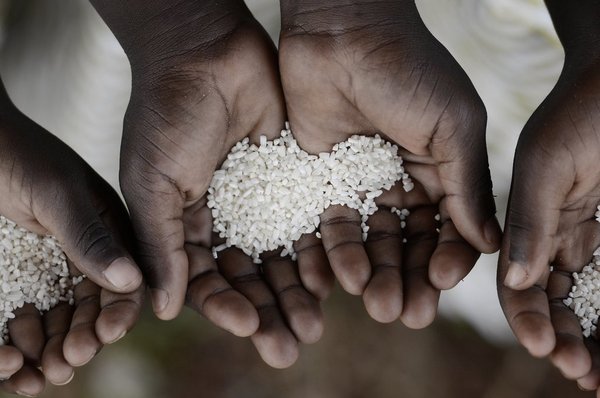 Read this article in French
Read this article in French- Share this article
- Subscribe to our newsletter
Food crisis looming in West and Central Africa
Acute food insecurity is on track to reach a ten-year high in West and Central Africa by June of this year, the Food and Agriculture Organization of the United Nations (FAO) warned in April 2023. A new study shows a worrying expansion of food insecurity into coastal countries, and catastrophic levels of hunger hitting conflict-affected areas of Burkina Faso and Mali, where humanitarian assistance is severely hindered by insecurity.
For the first time in the Sahel, 45,000 people are forecast to experience catastrophic (phase 5) levels of hunger – one step away from famine – including 42,000 in Burkina and 2,500 in Mali.
According to the March 2023 Cadre Harmonisé food security analysis, the combined effects of conflict, climate shocks, COVID-19 and high food prices continue to drive up hunger and malnutrition in the region, with the number of people lacking regular access to safe and nutritious food projected to rise to 48 million during the June-August 2023 lean season – a fourfold increase in the last five years. The results also confirm a longer-term trend towards a geographic expansion of food insecurity in the region.
The already grim nutritional situation for communities across the region is also on the slide, with 16.5 million children under five years of age set to face acute malnutrition in 2023, including 4.8 million children expected to suffer from the debilitating severe form (SAM). This is an 83 per cent rise in global acute malnutrition (GAM) compared to the 2015-2022 average. In addition to the unaffordability of a diversified nutritious and healthy diet (especially for young children and women), conflict and population displacement are one of the primary drivers of the worsening situation, leading to reduced access to essential social services (health, nutrition, WASH, social protection) and negatively affecting care practices. Between 2019 and 2023, security incidents increased by 79 per cent in the region, causing massive population displacement and disrupting access to farming land and fodder.
Despite improved rainfall in 2022, the access to and availability of food remain of major concern. The region remains net import-dependent, and currency depreciation and high inflation are causing food import bills in it to rise, even as countries struggle with major fiscal constraints and macroeconomic challenges. Furthermore, there are concerns that transhumance movement restrictions and high concentrations of livestock in some areas could lead to further deterioration in pastoral and security conditions.
FAO, the UN Office for the Coordination of Humanitarian Affairs (OCHA), the UN Children's Fund (UNICEF) and the UN World Food Programme (WFP) renew their call on development and humanitarian partners – as well as the private sector – to support national governments in strengthening food security and nutrition in the region. This includes building food, health, water, sanitation and hygiene systems, and nutrition-sensitive social protection programmes that target vulnerable groups such as women and young children.
(FAO/ile)
Read more on the FAO website





Add a comment
Be the First to Comment